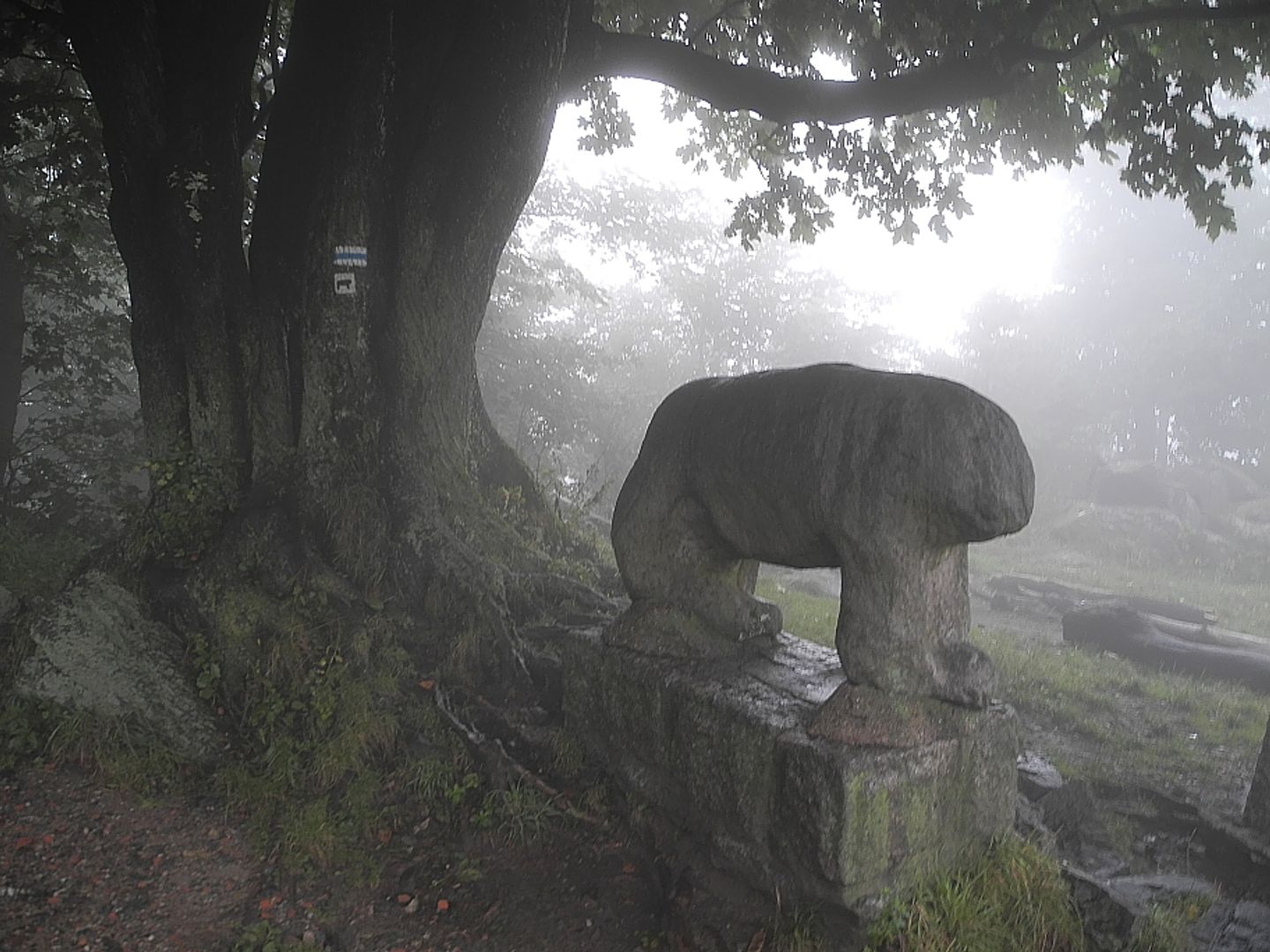Bear
6.8

Overview
A sculpture made of light biotite granodiorite, known as the "Bear" (or "She-Bear," "Wild Boar"), measures approximately 148 cm in length and depicts a schematic animal standing on four legs, likely a bear, complete with a bear-like tail. It features damage such as missing lower parts of the legs and a destroyed head surface. The sculpture bears two marks: one, now faded, is older, while the other is an oblique cross, dated to the early 20th century. The sculpture was created during the La Tène period, between 400 and 200 BCE, and was discovered near Strzegomiany, likely at one of the cult sites on Mount Ślęża. In modern times, the sculpture has been known since the 18th century, when it lay on its side, and from 1853 onward, it gained significance after being set upright. In 1903, it was moved to the summit of Mount Ślęża, where it remains to this day, next to the Church of the Visitation of the Blessed Virgin Mary. Its silhouette was incorporated into the coat of arms of Sobótka in 1960. Medieval legends associate the sculpture with the figure of Piotr Włostowic, and residents of Strzegomiany gave it folk names such as "Sow" or "Wild Boar." Particularly noteworthy is the local tradition where residents would greet the sculpture with shouts while throwing stones at it. Additionally, other bear sculptures in nearby Sulistrowiczki also reference local pagan cults, indicating the broad influence of this art form on the region's culture. Thus, the "Bear" sculpture is not only an important archaeological artifact but also a significant cultural element, reflecting local history and beliefs.
Location
2025 Wizytor | All Rights Reserved